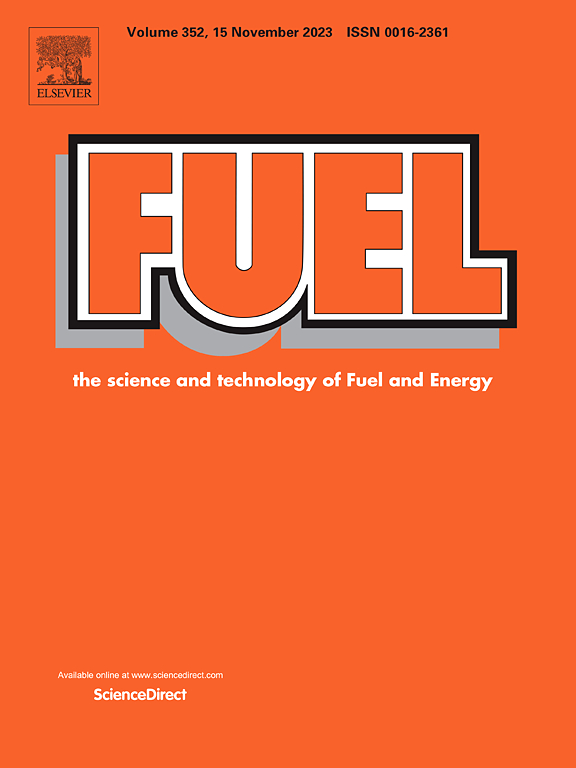Ni- and Co-based catalysts via alloying Ni and Co with Sn species for selective conversion of vanillin through tailoring hydrogenation and deoxygenation activity
IF 6.7
1区 工程技术
Q2 ENERGY & FUELS
引用次数: 0
Abstract
Phenolic compounds from pyrolysis/hydrolysis of biomass contain benzene ring and generally multiple oxygen-containing functionalities of varied types. This renders simultaneous occurrence of ring-saturation, hydrogenation of carbonyls and hydrodeoxygenation possible during hydrotreating phenolics, creating difficulty for selective production of certain chemicals. To tackle this, alloying Ni-Al and Co-Al catalysts with Sn species was proposed herein to confine the catalytic selectivity. The results confirmed formation of Ni-Sn and Co-Sn alloys, which weakened interaction between metal oxides and alumina, facilitated reduction of metal oxides, reduced capability of adsorption/activation of H2, formed electron-rich Ni species via electron transfer from Sn to Ni species and created strong Lewis acidic sites. This changed the adsorption pattern of vanillin from parallel mode to tip-top position, avoiding ring-saturation and achieving high yield of 2-methoxy-4-methyl-phenol (MMP: >99 %). Hydrogenolysis of vanillyl alcohol (activation energy: 77.7 kJ·mol−1) was the rate-determining step for conversion of vanillin to MMP. Additionally, compared to Ni-Al catalyst, oxyphilic Co species in Co-Al were more active for demethoxylation for selective production of 4-methyl-cyclohexanol (yield: 97 %).

求助全文
约1分钟内获得全文
求助全文
来源期刊

Fuel
工程技术-工程:化工
CiteScore
12.80
自引率
20.30%
发文量
3506
审稿时长
64 days
期刊介绍:
The exploration of energy sources remains a critical matter of study. For the past nine decades, fuel has consistently held the forefront in primary research efforts within the field of energy science. This area of investigation encompasses a wide range of subjects, with a particular emphasis on emerging concerns like environmental factors and pollution.
 求助内容:
求助内容: 应助结果提醒方式:
应助结果提醒方式:


